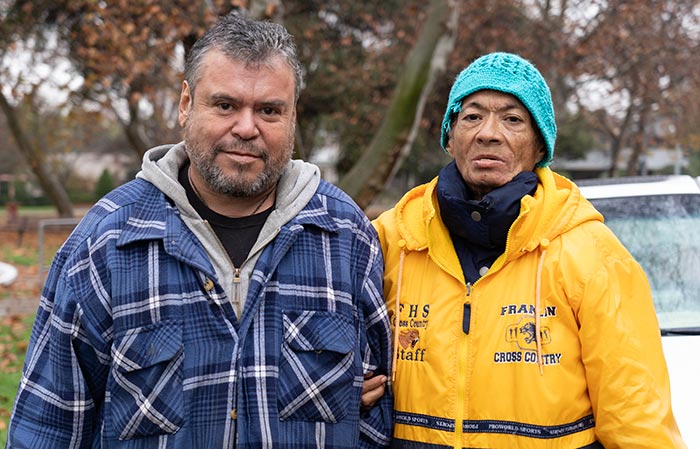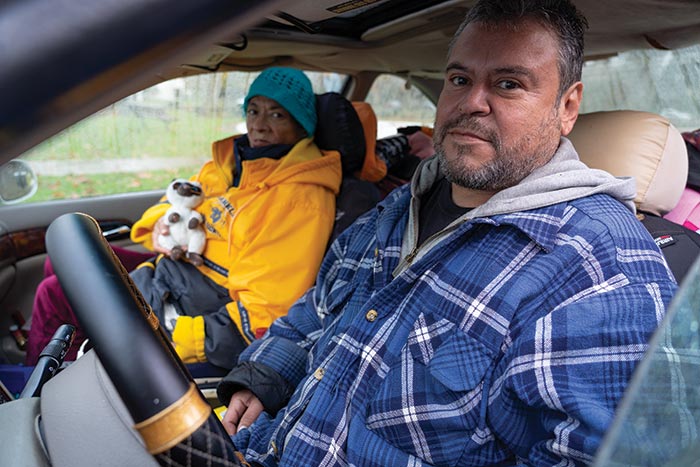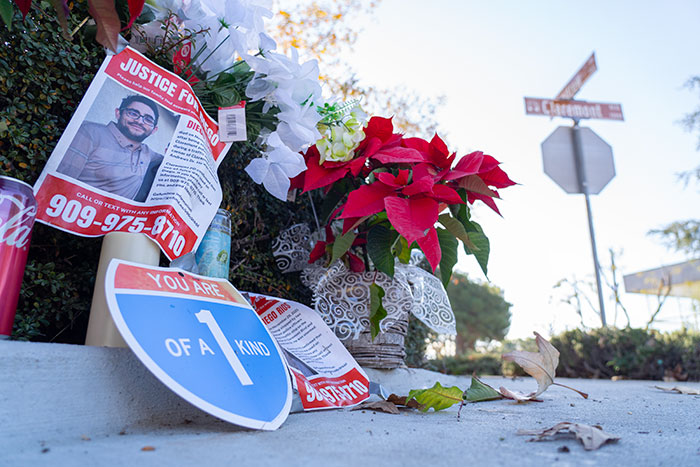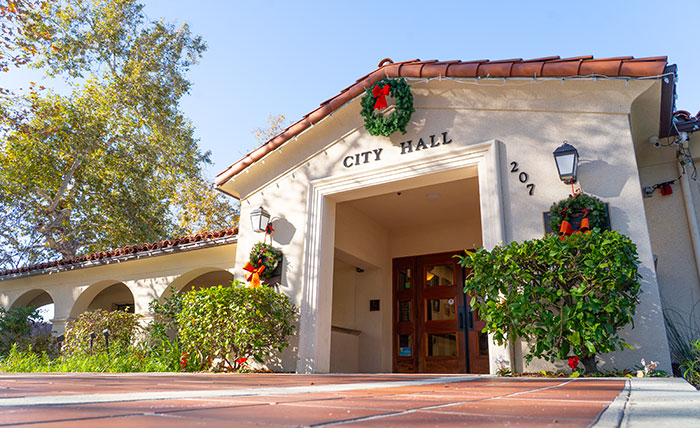LA County homeless count reaches Claremont

Andrew Elizarraras and Theresa Gardner, pictured Thursday at Memorial Park, live in their car. Courier photo/Andrew Alonzo
By Andrew Alonzo | aalonzo@claremont-courier.com
From parking lots to residential streets, 27 volunteers fanned out over Claremont Tuesday evening to gather census data during the 2024 Greater Los Angeles Homeless Count.
The annual count, mandated by the United States Department of Housing and Urban Development, measures how many unhoused people are out on a given night and helps allocate federal funding to aid the community.
“It just seemed like a small thing to do, perhaps it might help the problem,” said Claremonter and count volunteer Wesley Mason. “You know, I’m a little skeptical of how the information’s going to be used. We didn’t find any homeless people, but I know — we both know — and we all know there’s homeless people in Claremont right now.”

An unhoused person — barely visible under a blue blanket — sleeps among their belongings Tuesday evening in front of the Claremont Village Starbucks. Courier photo/Andrew Alonzo
The evening started at 8 p.m. at the Alexander Hughes Community Center, where volunteers were split into 11 teams to cover 15 census tracts. The Courier was partnered with Claremont volunteers George Ambrocio and his wife, Rachel Forester, in tract 402001, which spanned along Auto Center Drive, the west side of Indian Hill Boulevard up to Santa Fe Street, and a portion of Arrow Highway between Towne Avenue and Indian Hill. The 2 ½ hour search yielded just one unhoused person in the Kinder Kountry Learning Center parking lot.
It was a quiet night for volunteers, likely due to the cold weather. Claremonters and volunteers Bill Dodge and Mason found no one on their route between Foothill Boulevard and Baseline Road from Indian Hill to Monte Vista Avenue.
“I’m glad we do it,” Dodge said. “I think it’s wonderful that people volunteer and get involved because they’re concerned about the issue.”
The Courier met with local unhoused folk before the count got underway to understand their situations.
Marshall Miles, a 44-year-old unhoused U.S. Army veteran, has been common sight around the Village for the past few years. Miles said he enlisted in the army at 15 after lying about his age on the application. He was looking for work, and after training, landed a job as an engineer in avionics, which in layman’s terms is someone who works on an aircraft’s electronic systems. He eventually achieved the rank of second lieutenant. After his stint in the army he found himself homeless. His most pressing daily challenge is getting money for food. He’s also had trouble being admitted to some local restaurants, he said.

Theresa Gardner and Andrew Elizarraras, pictured Thursday at Memorial Park, live in their small Acura coupe. Courier photo/Andrew Alonzo
David Briggs, who the Courier spoke to last year, has been on the street for about two years following the death of his wife. Like last year, he said he believed the homeless count is pseudo-science.
“They try to measure something that’s almost unmeasurable,” Briggs said. “The best measure would be a spectrum. You know, how close are you to being unhoused?
“Homelessness begins when someone in authority says, ‘You can’t stay here,’” he added. “The focus needs to be what can you really do to get them off the street.”
Showers and soup kitchens are nice, Briggs said, but such programs are not reducing the number of people living on the street.
“What is really taking somebody off the street?” he asked. “You have two things that are keeping a person on the street: one is the initial trauma that knocked them off their feet in the first place, and then there are cold hearts — cold hearts meaning cold hearted systems, cold hearted people, cold hearted rules.”
Briggs said that if people truly want to help the unhoused community, a new approach is needed.
“If you’re serious about helping the homeless then all this data doesn’t matter,” he said. “A numbers game is just a game, and if you really want to do it, it’s individual by individual, not en masse. You’re going to have to take each individual find out what they need and encourage them to provide enough income for themselves to get ahead.”
Briggs added that if people want to better understand the unhoused community, they should interact with them.
The count, overseen by the Los Angeles Homeless Services Authority, sent volunteers to incorporated and unincorporated areas across LA County. Tallying began in the San Fernando and San Gabriel valleys Tuesday, moved into East and West Los Angeles Wednesday, and wrapped in the Antelope Valley, metro, and South Los Angeles areas Thursday. An inventory count of those living in interim and permanent supportive housing took place Thursday. LAHSA is conducting a youth count through the end of January.
Results from last year’s count revealed roughly 75,518 unhoused people residing in Los Angeles County on any given night, a 9% increase from 2022. About 5,009 persons were counted residing in service planning area three, which covers the San Gabriel Valley and includes Claremont. Twenty-six unhoused persons were counted in the City of Trees in 2022.
Countywide results from this year’s count will be available in late spring or early fall. For updates, visit lahsa.org, call (213) 683-3333 or email communications@lahsa.org.










0 Comments